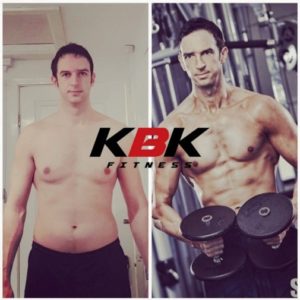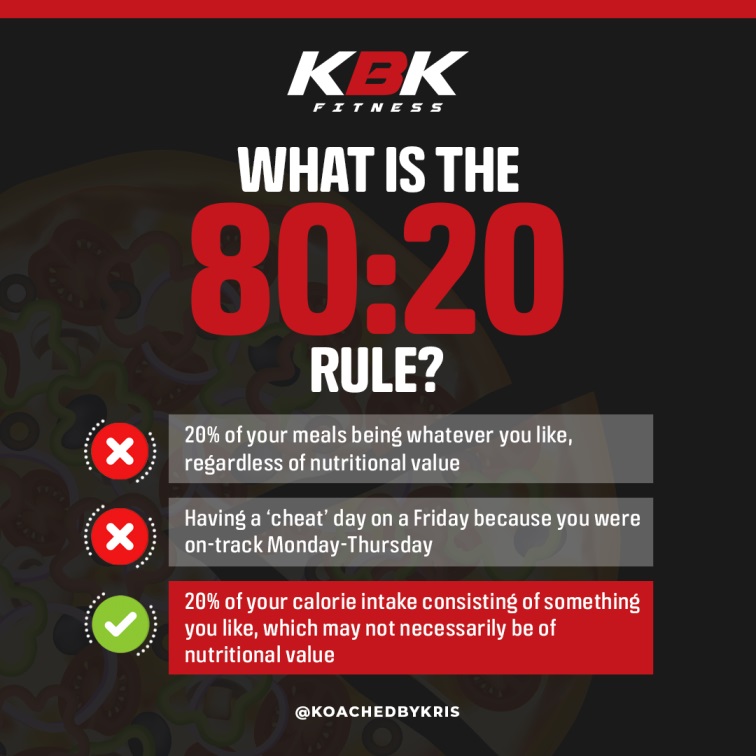In this week’s newsletter
Weight control tips. Overlooked muscle groups: Part 1 – Forearms. Jicama Veggie Tales. What is the 80:20 Rule? What’s LOVE got to do with FIT? My work setup. The crazy rollercoaster.

Can you hear what your body is saying to you about the foods you eat? Photo by Brett Jordan on Unsplash
Editor’s Corner

Mitch Tulloch is the Senior Editor of FitITproNews and a recovering fat IT pro who lost 50 lbs in midlife and is now on his way to becoming a fit IT pro. Mitch is a widely recognized expert on Windows Server and cloud technologies who has authored or been Series Editor of numerous books/ebooks from Microsoft Press. Mitch is also the Senior Editor of WServerNews and writes frequently for TechGenix.
Hey everyone!
Controlling our weight is frequently on the mind of “recovering fat IT pros” like myself (and probably you). That’s why I asked Craig Hollins who runs a small Managed Service Provider (MSP) in Australia to share some of his tips for managing weight. Craig contributed the guest post for this month’s issue of FitITproNews, and he has a lot of simple, good advice we can learn from in his article below. Meanwhile our regular columnists continue to provide us with life-based guidance in the areas of exercise, nutrition, weightloss and general health maintenance. For example Robin Camp begins a new series of articles on exercising overlooked muscle groups like forearms. Kris Lall talks about a new healthy snack food that he recently discovered, and it’s low on calories too! Kris Kane shares his 80:20 rule that helps you keep focused on sound nutrition while allowing yourself the occasional treat. Lana Khazari explains how a proper mental attitude towards yourself can help you improve your health and fitness. Sarah Trammell describes how she has set up her work area for maximum wellbeing and utility, something that all of us who have moved to doing remote work should think carefully about. And Mitch Garvis talks about weight loss being like and not like riding a rollercoaster. Life is like that sometimes too, isn’t it? Especially during this ongoing pandemic, which we all hope will wind down soon.
Anyways, enjoy this month’s issue of FitITproNews and feel free to send us feedback on any of the topics we’ve covered because we love hearing from our readers!
Cheers!
Mitch Tulloch, Senior Editor
GUEST POST: Weight control tips (Craig Hollins)

Craig runs a small MSP in Australia that concentrates on small government entities, not for profits and small professionals businesses. He lives on a small vineyard (not a winery — don’t get excited) part time and spends the rest of his week trying to get his kids to move out of home. Travelling around the remote areas of Western Australia is his COVID safe way of holidaying.
Whilst nobody would call my “dad bod” svelte, I do believe I maintain a reasonable body weight. I have been heavier in my younger years mainly due to lifestyle changes that I didn’t adapt to. My biggest success though, has come from a simple change in my diet.
Wherever possible I refuse food that comes from a factory. It doesn’t matter what the food is, if it was made on a production line it’s going to have a lot of sugar, salt and fat added to the natural ingredients because they need it for flavour and as a preservative. This, naturally, also excludes nearly all fast food franchises.
I made a point of looking up videos online of simple quick meals to make at home. Nearly all of them can be made with little more effort than reheating a frozen meal.
Even some of the ingredients we buy are loaded with hidden sugar. For example pasta sauce you buy in a jar have more sugar than spices. And they don’t taste anywhere near as nice as one you make at home.
My other tip on weight control is listen to your body. If you’re not hungry at dinner time then delay eating, have a smaller serving than normal or skip the meal altogether. If you have a craving for ice cream then eat it but make sure it’s a craving and not a routine thing.
By doing these simple things I’ve never needed the likes of Jenny Craig – whose business model is to sell you factory made food. Instead my fridge is full of foods that, if not eaten in the next few days, will find their way to the chickens or the bin.
Finally exercise. You don’t have to run miles every day but take the stairs, get a standing desk, get off the bus one stop early. If we are honest we can all find the extra few minutes – we just have to think about them at the time and be motivated.
And if you want a place to start to learn cooking simple but delicious meals, look for a YouTube channel Nat’s What I Reckon. They are also funny but some might find the language a bit colourful.
Overlooked muscle groups: Part 1 – Forearms (Robin Camp)

Robin Camp works as tech support for an Orthodontic Practice Management Software company called New Horizons Software ( www.nhsoftware.com). As a professional photographer on the side, Robin does fashion, glamour weddings and more in his spare time (www.dancingwithlightphoto.com). You can also now find him working out on Instagram at https://www.instagram.com/fitittech/.
As week six of testing positive for COVID starts, I have been looking at what I can do as my energy levels are starting to come back. One of the things I have meant to address for a while is a few sets of often neglected muscle groups. Today, I am going to cover the forearms.
Forearms are often overlooked, they are rarely a showy muscle like the bi’s or tri’s and many people often overlook how much the forearms contribute to major lifts. The forearm contains nearly twenty different individual muscles which do everything from supporting the biceps during heavy lifts (the brachioradialis which ties in the forearm muscle group to the bicep) supporting grip stability during presses to protect the wrists from injury to increasing grip strength for big lifts such as the deadlift or snatch. They also help with the basic things in life, like carrying the groceries to the car, turning a wrench, holding on to furniture as you move it etc. Properly trained forearms can also help prevent the injury known as Tennis elbow which is often caused by an imbalance between the upper arm muscles and the forearm muscles.
So, how do you train them? If your grip is weak and you do not have access to gym facilities, pick up a basic grip trainer from your local sporting goods store, splurge the extra 5-10 dollars and buy an adjustable one which allows you to adjust the tension. Start at the bottom and work your way up with 3-4 sets of 10-12 reps, or if you are just starting as many reps as you can if you can’t get to the 10-12 range. One of the nice things about a grip
Another relatively inexpensive trainer is known as a wrist roller. It usually looks like a pipe with a thick cord attached to it. Attach a small weight to it anywhere from 2.5 lbs to 10lbs if you are just starting out. Stretch out the cord, then with your arms extended, slowly roll the cord up alternating hands to pull the weight towards you, and remember to just use your wrists for this action.
If you roll it up using and upward motion of your wrists you will hit the outer forearm muscles, rolling it up by using a downward wrist motion will hit the inner forearm muscles. If you have a pull up bar, you can also run the cord over it and using the roller pull the weight up and lower it using the roller.
Do not be discouraged if you are just starting out, the forearm muscles respond fairly quickly to training and recover quickly, allowing training up to three times a week.
If you have access to dumbbells, another exercise, hammer curls, which are performed very similarly to regular curls but with the palms of your hand facing each other hit the brachioradialis which ties your forearms to your biceps. Reverse curls with your palms facing the grounds will also target the forearms.
Next time I will discuss another muscle group that is often overlooked, the calves.
Stay safe and healthy!
“Do not let yourself be contaminated by others’ ideas of what is best for you. Cast aside the shackles of destructive thinking.” -Kai Greene-
“If something stands between you and your success, move it. Never be denied.” -Dwayne Johnson-
“If you can’t do something smart, do something right.” -Jayne Cobb-
“Why do we fall? So we can learn to pick ourselves up.” ~Alfred Pennyworth~
Jicama Veggie Tales (Kris Lall)

Kris Lall works as a product manager in the tech industry for an enterprise software manufacturer. As a youngster, Kris was consumed with soccer before technology came along. Now he’s consumed with both. You can find him on Twitter at the not-too-surprising handle @krisoccer.
Honestly, I mostly just like to say it — “hi-kuh-muh”. When I noticed it in the fridge the other day, I was thinking, “Hey, this looks like it might also be good to eat”, and I was right. I’d consumed jicama in the past, but it was the first time I’d see it cut into shoots for snacking.
With IT folks working from home during the pandemic, and hence, more conveniently located to the fridge, it’s more important than ever to have our fridges are properly stocked with healthy snacks. Further, I thought it might interesting to research what types of natural snack options have made their way into our kitchens and fridges the past few years.
While plenty of the more traditional snack foods of apples, oranges, carrots, broccoli, and celery all have health benefits, “newer” foods abound that I hadn’t noticed (or more likely ignored) at the grocery store. Some of the more recent additions to my snack (and meal) list include foods like the kale, avocado (guacamole), chickpeas (hummus), chia seeds (powdered for smoothies), plantains, and quinoa (a grain). And then of course, stumbling upon that container of jicama the other day:

Jicama and other veggies could be viable snack options for IT folks seeking a healthier diet.
After taking a bite and liking both the texture and mildly sweet flavor, I wanted to know how jicama might compare health-wise to traditional veggies. Because the Jicama had come in slices/shoots in a container, I had difficulty imagining what the source vegetable plant was. Turns out that it’s similar to a turnip and is often referred to as Mexican turnip.
I then performed some research to compare jicama to some of the more popular veggie snacks. According to the website versus.com, carrots have a slight edge in nutritional value compared to jicama when looking at factors, like sugars, amino acids, vitamins, and minerals, but still very healthy. This source is a website that enables you to compare any vegetable’s nutritional value to any others:
https://versus.com/en/carrot-vs-jicama
So if you’re looking to meet a particular nutrition goal with your veggie intake, check it out.
I also came upon several newer veggies to sample and potentially add to my snacks list: sweet potatoes (fries — not all snacks have to be perfectly healthy), seaweed, mushrooms (especially Shitake), various peppers, and green soybeans (used for edamame). Furthermore, just about all veggies go well with hummus (made from chickpeas, garlic, and more), so you can get a double-whammy of nutrition while snacking. Most or all should be readily available at your local grocery store.
Much like Newman’s description of broccoli as a “vile weed” on Seinfeld, not every fruit, vegetable, or grain is for every person. The good news is that we have more options than ever before, especially for those of us sitting in front of the computer most of the day. Some even have names that are fun to say.
References:
https://www.medicalnewstoday.com/articles/324241#dietary-fiber
https://www.healthline.com/nutrition/11-proven-benefits-of-quinoa#TOC_TITLE_HDR_6
https://versus.com/en/carrot-vs-jicama
https://www.healthline.com/nutrition/vegetarian-snacks#TOC_TITLE_HDR_17
What is the 80:20 rule? (Kris Kane)

Kris Kane is a North Yorkshire based personal trainer, martial arts instructor and general fitness enthusiast. You can find him on Instagram at @koachedbykris and also view him professionally on LinkedIn at www.linkedin.com/in/kris-kane.
A mistake many make with their nutrition is excluding ALL the foods they normally enjoy, being overly restrictive, and then end up rebounding when cravings take over.
The 80:20 rule is a great guideline to show that most of your intake should be from nutritious healthy sources that will sufficiently fuel and support your goal. But this then leaves room to still include some more highly palatable choices without affecting your overall progress.

Nutrition should be about variety and inclusion not restriction and total exclusion.
Just remember the danger is in the dosage and it’s your overall energy balance that will dictate whether you lose or gain weight.
I have a calorie calculator on my website which will help you with a realistic starting point for tracking intake depending on your goal:
https://kbkfitness.co.uk/calorie-calculator/
If you struggle with managing nutrition and feel it’s holding you back making progress, feel free to drop me a message to see if I can help!
What’s LOVE got to do with FIT? (Lana Khazari)

Lana Khazari is a Technical Support Analyst for the Corporation of City of Windsor, Ontario, Canada. She is also a Precision Nutrition Coach, Personal Trainer, Fitness Instructor and a Yoga 200-RYT Instructor. You can find her online at lanakharazi.com.
Beauty culture is ugly. The cultural obsession with outward appearance causes extreme damage to women and girls. Women spend more money, time, and emotional resources on beauty than men, with a huge impact on everyday life. I can think of numerous ways my mind has been obsessed with beauty. 1. Lifting my thighs higher off the car seat to not look as wide and squished out 2. Obsessive ab checks in the mirror 3. Dropping hundreds on skin care regimes 4. Confined to a chair on an evening out because uncomfortable heels are torturing my toes. This all started for me in the ’80s where I flashback to myself singing along to Madonna. In her hit song “Material Girl,” she claims to be a product of her society as she conforms to unspoken rules because “you know we are living in a material world,” a world that demands hyperawareness with money. And as it is with money, it also is with beauty. We are not things, and there are major consequences to us thinking this way. We weren’t born wanting to be thin, and young girls are buying into this early just like I did.
It’s a sick, sick culture. And it does a great job of making us hate ourselves by selling you on the notion that “you are NOT enough” the way you are and that THEY, not you, have the answers. Devoting our time to being thin, young, and pretty doesn’t leave us with much time to do other things. Just think about how long it takes a woman to get ready each morning.
Enter body acceptance movement – #bodypositivity #effyourbeautystandards #honormycurves #celebratemysize. More and more people are revolting against this cult of perfection. I believe that true beauty is found on the inside, and your value as a human being is completely unrelated to your appearance. So it is important to destroy the “ideal” female body image to relieve ourselves from beauty debt and the need to perfect our bodies, diets, weight to be good enough. Many beautiful souls come in different shapes and sizes, but the body acceptance movement also pushes a different message.
As much as I celebrate self-acceptance and demolishing the “ideal” standard of thinness and beauty, some social media posts leave me conflicted.
The same movement is also pushing the messaging that it is OK or even preferable to be overweight. That you should always love your body no matter what. And to be clear, you could be carrying some extra weight and still be healthy. The problem is not about being overweight. I’ve heard many insensitive jerks whose solution to all this is to “stop eating McDonald’s.” These jerks believe that people need to be reminded bout their weight to change it. Much criticism comes from people stuck in the same cultural messages that brought on the movement. The belief that a perfect body looks a certain way and that you don’t really “care” about yourself unless you are pursuing the perfect body.
Disregard for health and self-neglect is not a form of self-love. Pick a human or a pet that you love in your life. How do you show that being love? You check-in. You spend time together. You contribute both emotionally and physically. You make sacrifices to nurture and grow that relationship and to make it stronger. So how can you claim to love something you don’t take care of?
LOVE is the answer. Solutions to body-image, food, weight, eating issues are not about food and not about weight. Connection and harmony with your body and yourself help you protect yourself, trust yourself, and persevere. To know, feel, and embrace your power through self-confidence and self-esteem. To allow yourself to “feel beautiful” no matter what right now.
If you are on a purposeful transformation path, forget about the cosmetic or “beauty” gains. Rather, invest in treating your body well and connecting with yourself on a deeper level.
Eat like you LOVE yourself.
You can follow a diet strategy, but it is not the goal in itself. Force and control should not be dictating principles. A healthy mindset always takes precedence. Trying to nurture yourself instead of abiding by self-destructive rules like believing it is “wrong” to eat too much, labeling foods “good” or “bad,” and tormenting yourself for being “bad” because you ate “food not on your diet.” Self-care is letting go of the rule book and offering yourself patience, understanding, and compassion. In the face of temptation, give yourself “emotional permission” to have any food you want, and guilt no longer has a place in your perception. The temptation or urge to rebel softens.
Move like you LOVE yourself.
Workout because you love your body, not because you hate it. Exercise should never be a form of punishment. Find something you enjoy doing and that you can sustain over the long term because moving your body is necessary if you want it to keep working for you.
Speak like you LOVE yourself.
Always remember to talk to yourself like you would your best friend. That means calling yourself out on negative self-talk. Negative self-talk is never “motivating.” More often than not, you just end up bullying yourself into submission. Research shows that positive self-talk with self-compassion works better towards your goals.
Act like you LOVE yourself.
Failing to see yourself is the root of female body-image issues. When you can’t see yourself for who you are and unable to value yourself, you cling to external “ideals.” These “ideals” make you self-conscious, and you self-reject. Where the mind goes, the behavior follows. Learn to adopt a mindfulness approach. Accept “what is” and stop beating yourself up. Self-love and self-respect are the paths through challenges and obstacles. Self-connection should be the main component of any pursuit for self-improvement.
So if you love your body, action speaks louder than words. Are you doing everything you can to keep your body healthy? If so, can you lovingly accepting your body in whatever shape or size. If not, express your love by taking action towards good health. Taking care of your needs in healthy and self-enhancing ways builds the vitality essential to well-being.
My work setup (Sarah Trammell)

Sarah Trammell is an application analyst at a university in Georgia. She became interested in health and fitness issues when she began making diet and lifestyle changes to lose weight back in 2007 and learned even more when trying to track down what to do about other health issues beginning in 2011 with not much input from doctors. You may follow her blog at ihatemyglutenfreelife.com.
I’ve been working in the IT field since I graduated from college, for almost twenty-two years! Over those years, I’ve had to make a lot of changes to my mouse, keyboard, monitor, and chair in order to work comfortably. I thought I would share some of these changes in case others may find them helpful. Some are unique to my own physical situation, mainly my inner ear damage, but most I think could be helpful for anyone.
I have inner ear damage on the right side, and it causes symptoms from visual motion, head position, and head movement. My monitor setup is mostly for minimizing these symptoms. It sits at a height where I can look at it with my head held straight ahead. Basically, the middle of the monitor is at eye level or close to it. This position allows me to use my monitor with minimal symptoms. I think in general it’s a comfortable height as well. My monitor is also placed on the desk a good distance from where I sit, far enough to minimize symptoms but not so far back that it strains my eyes. My monitor is a 19″ widescreen, which can help with putting two files or applications side-by-side since I no longer use a dual-monitor arrangement. A monitor that’s too large can aggravate my symptoms, and I discovered that moving my head back-and-forth while using a dual-monitor arrangement made me dizzy. At work, my computer, a laptop, is connected to a docking station, and my monitor, keyboard, and mouse are plugged into the docking station. When I have my laptop at home, I sit the laptop on a stand so that it sits at a height that allows me to keep my head and eyes level. I use a separate keyboard and mouse with it.
I do not have a tray for my keyboard. A few years ago, I was dealing with a lot of pain, mainly in my wrists, while I was working. I ended up reaching out to my supervisor about my issues, and someone was brought in to analyze my setup. One of the biggest changes he had me make was to remove the keyboard tray and just place my keyboard on the desk itself. I could then rest my arms on the desk while using the keyboard. This change alone made a huge difference in my pain. One other improvement was centering my keyboard in relation to how I used it. I made sure the “home keys” were centered in relation to where I was sitting so that my arms were straight in front of me and my hands were “centered” on the keyboard. As a result, the number keypad was positioned further to the right, and my mouse was a long reach for my right hand, which would put more stress on my arm and shoulder. I switched to using my mouse left-handed because there was a lot more space for the mouse on that side, and I didn’t have to stretch to reach it and use it. It was actually a very easy adjustment to make.
Other changes that have helped me immensely are using a vertical mouse and placing a pillow on the chair behind my back for back support. The vertical mouse allows me to keep my hand, wrist, and arm in more natural positions while using the mouse. I use a pillow behind my back for back support. Initially, this was a tip given to me by the person who analyzed my desk arrangement years ago, but it has also been beneficial due to my inner ear damage. The pillow helps me to sit up straighter, and sitting up straight with my feet flat on the floor and my eyes and head level help me to work with minimal symptoms.
This setup has allowed me to work comfortably and with minimal symptoms from my inner ear issues for years now. Hopefully others will find this setup or certain aspects of it helpful for their comfort while working.
The crazy rollercoaster (Mitch Garvis)

Mitch Garvis has worn many hats in the IT industry, but his favorites have been teaching, writing, and helping companies to implement and improve their secure, well-managed infrastructure. In addition to being an IT Pro, Mitch is a Certified Cigar Sommelier, a Taekwondo instructor, a loving father of two, and a doting doggie dad. His blogs are www.garvis.ca and www.passionforcigars.com. You can also find him on Twitter @MGarvis, on LinkedIn, and you can find his dog on Instagram @PrincessSophie1.
Somebody told me recently that losing weight is like a rollercoaster ride, where we go up and down and have good days and bad.
No.
Having given this some thought, I am going to enumerate just some of the differences between weight loss and a roller coaster ride. In no particular order, here is my top five list.
- On a roller coaster, you feel weightless at the peak, and then when you are going down, you feel the heavy effects of gravity. In weight loss, you feel lighter as you drop, but at the top you feel heaviest.
- Roller coasters can be fun. Weight loss really is not.
- A roller coaster ride is 1-2 minutes long. Weight loss takes months or years, depending on how much you need to lose.
- When you get off the roller coaster you are probably a bit light-headed, but the effects wear off in a couple of minutes. When you finish your weight loss you have to continue working to maintain your weight, lest you put the weight back on as quickly as you lost it.
- You get onto a roller coaster with scores of other people; you all start at the same place, and you all finish at the same place. With weight loss, you might belong to a support group… but the results will vary widely. Most people will not start at the same starting point, and some people will be more successful than others.
Whatever the differences are, the two have one thing in common. I hate both. I have never enjoyed amusement park rides, and I love eating too much to want to diet. With that said, if I want to stay healthy, I have to diet… so I will continue trying to lose weight. Whatever weight I get to, I hope to stay there…
…and I hope to avoid both roller coasters for the rest of my life!
Send us your feedback!
Got feedback about anything in this issue of FitITproNews? Email us at [email protected] today!
The Toolbox
MailStore Server is an email archiving solution designed to keep all emails and PST files available and retrievable over the long-term.
Ontrack EasyRecovery has filtering tools to help sort the large amount of data the software can recover:
https://www.ontrack.com/products/data-recovery-software/
Sumatra PDF is a PDF, ePub, MOBI, CHM, XPS, DjVu, CBZ, CBR reader:
https://www.sumatrapdfreader.org/free-pdf-reader.html
MailBird is an IMAP and POP3 email client, featuring customization, complete touch support and multiple language support:
AutoHotkey is the ultimate automation scripting language for Windows: